All the Answers: report outputs
An All the Answers report consists of five tabs of data. Each of these is explained below.
You can also create subgroups of data taken from the main All the Answers report. The Subgroups tab explains this feature.
Depending on the permissions assigned to you, you may be able to share reports with other users. See Report sharing for more information.
Every report output has a cover sheet which shows selections from the full report results.
If any of your selected cover sheet data items have more than three possible answers, the cover sheet will display only the three most frequent answers. All other answers will be grouped into a single category: Other. This is to make the display easy to understand when several charts are shown on the cover sheet.
The full breakdown of answers to all questions selected for the cover sheet is available within the main results section of the output.
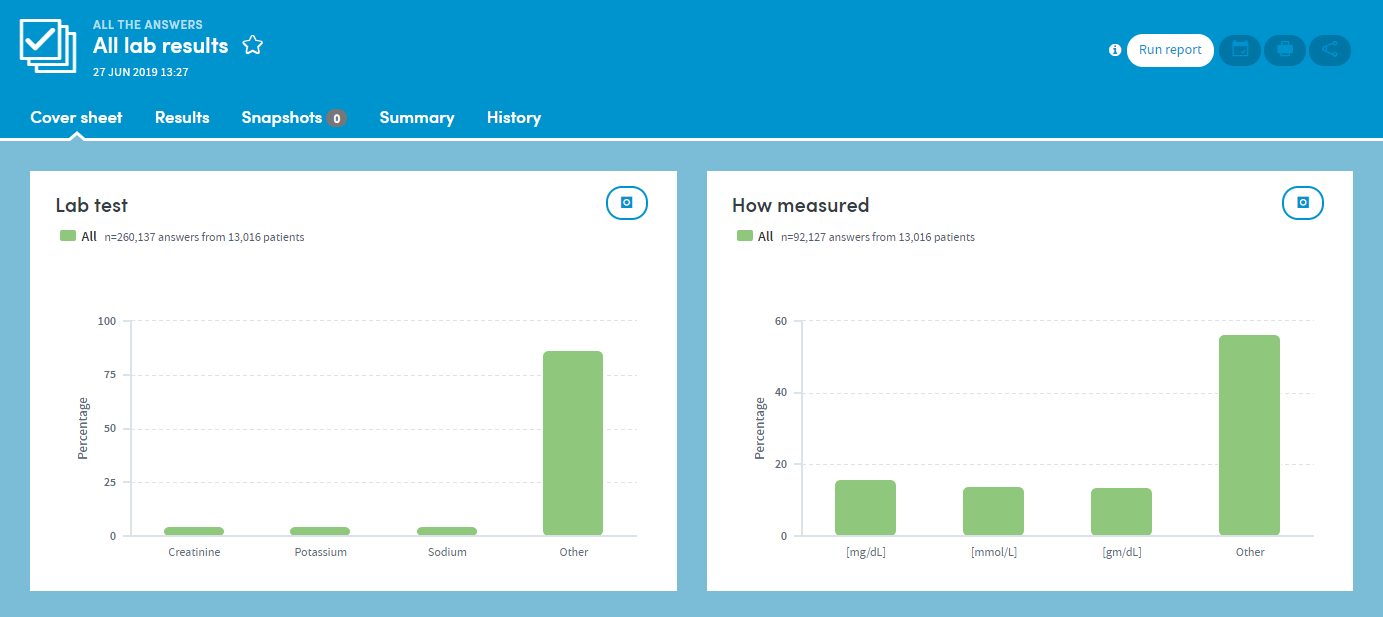
The Results tab displays a chart and table for every data item within your selected form or dataset. This includes a full breakdown by category of the items also displayed on the cover sheet:
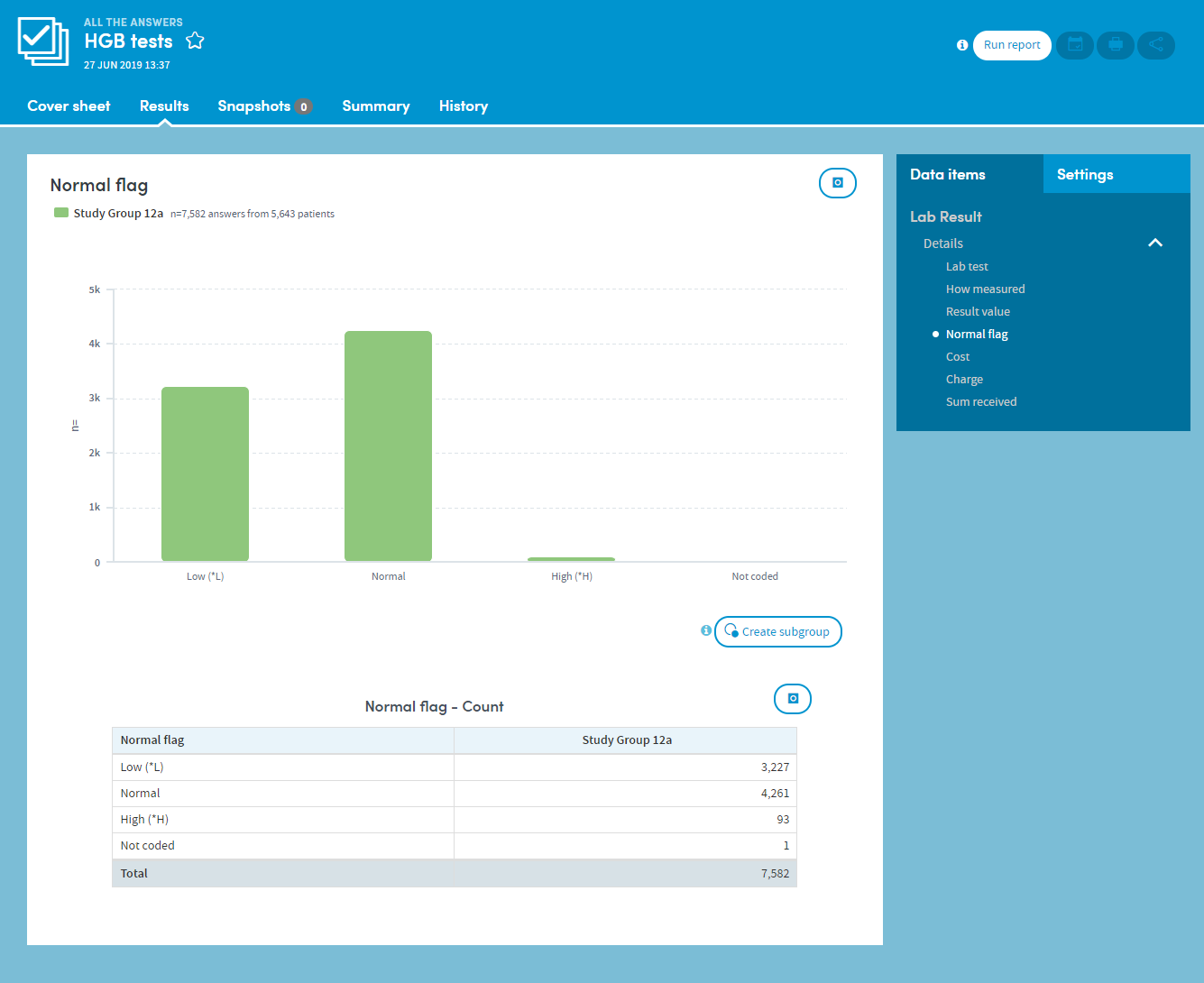
Data items
The results for each item are displayed by clicking in the Data items tab on the right-hand side of the screen:

Settings
Use the Settings tab on the top right of the screen to change the display attributes of the graph:
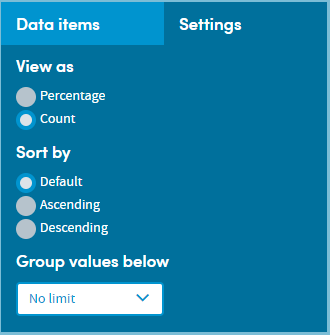
Data table
The data table displays both counts and percentages. Toggle between these using the Settings tab.
There are in fact two percentage columns:
- % of n calculates percentages based upon all responses to each data item.
- % of n excluding nulls values excludes null values such as not known from the calculation:
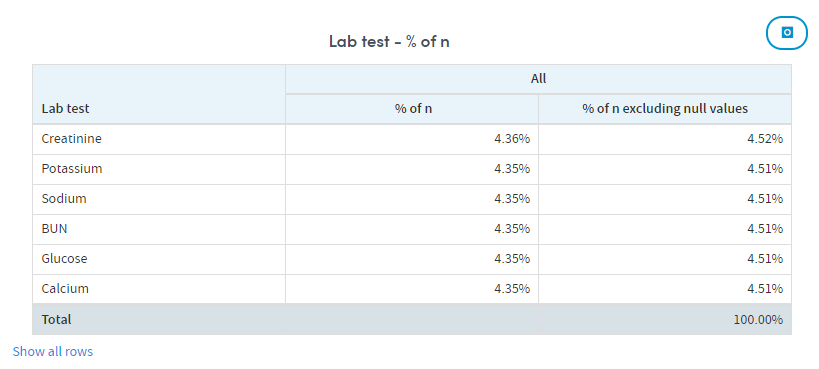
As well sharing report outputs, you can also take, share, and discuss ‘snapshots’ of your Atmolytics reports with other users, using a built-in chat room facility. At various places in the Cover sheet and Results tabs of your report, you’ll see a snapshot icon:
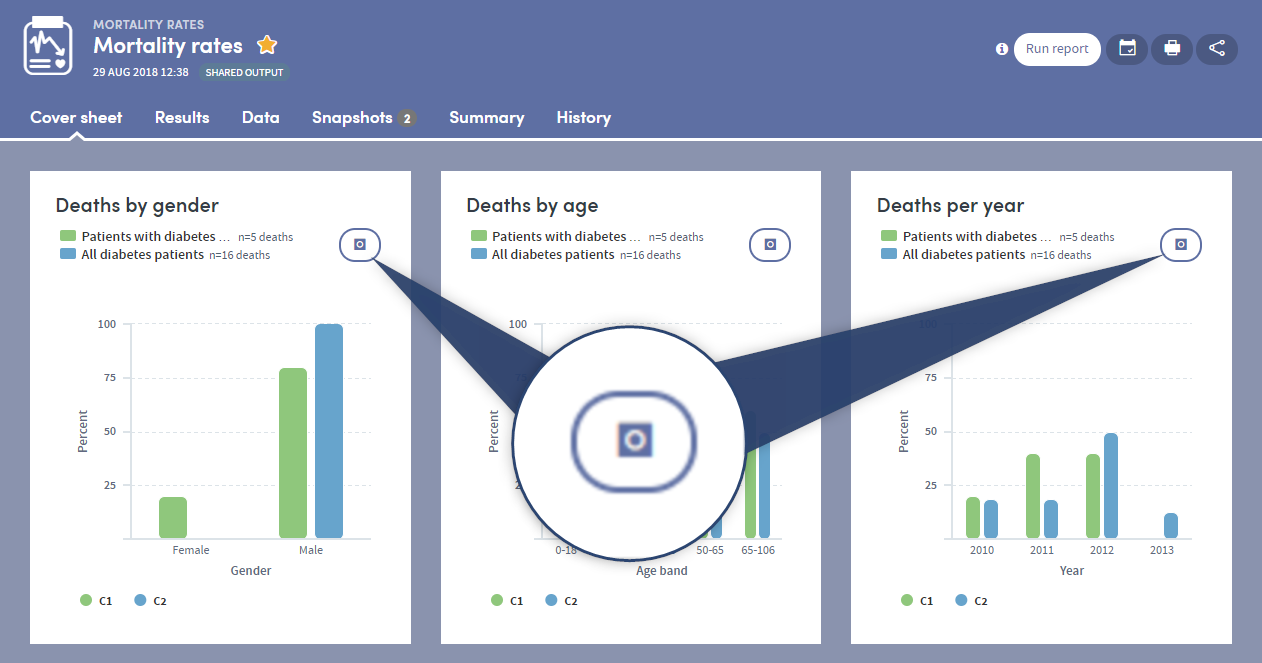
Click the icon to take a snapshot of that area of the report:
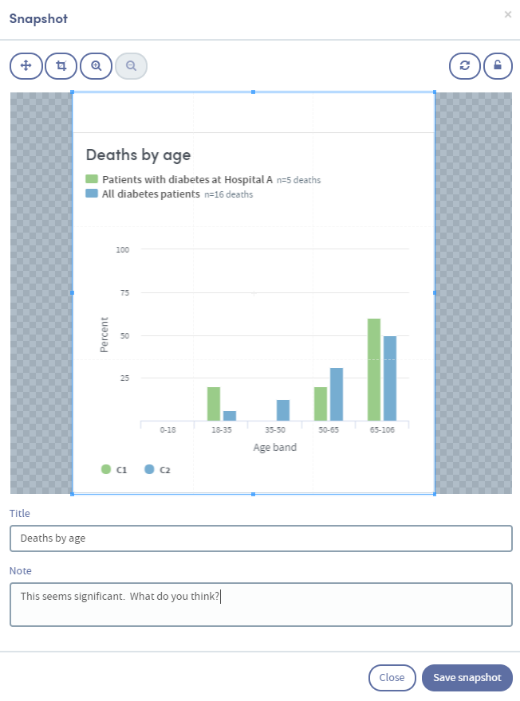
Add a title and an optional note, and click Save snapshot. Once the snapshot is saved, the image and comment are saved under the report’s snapshot tab:
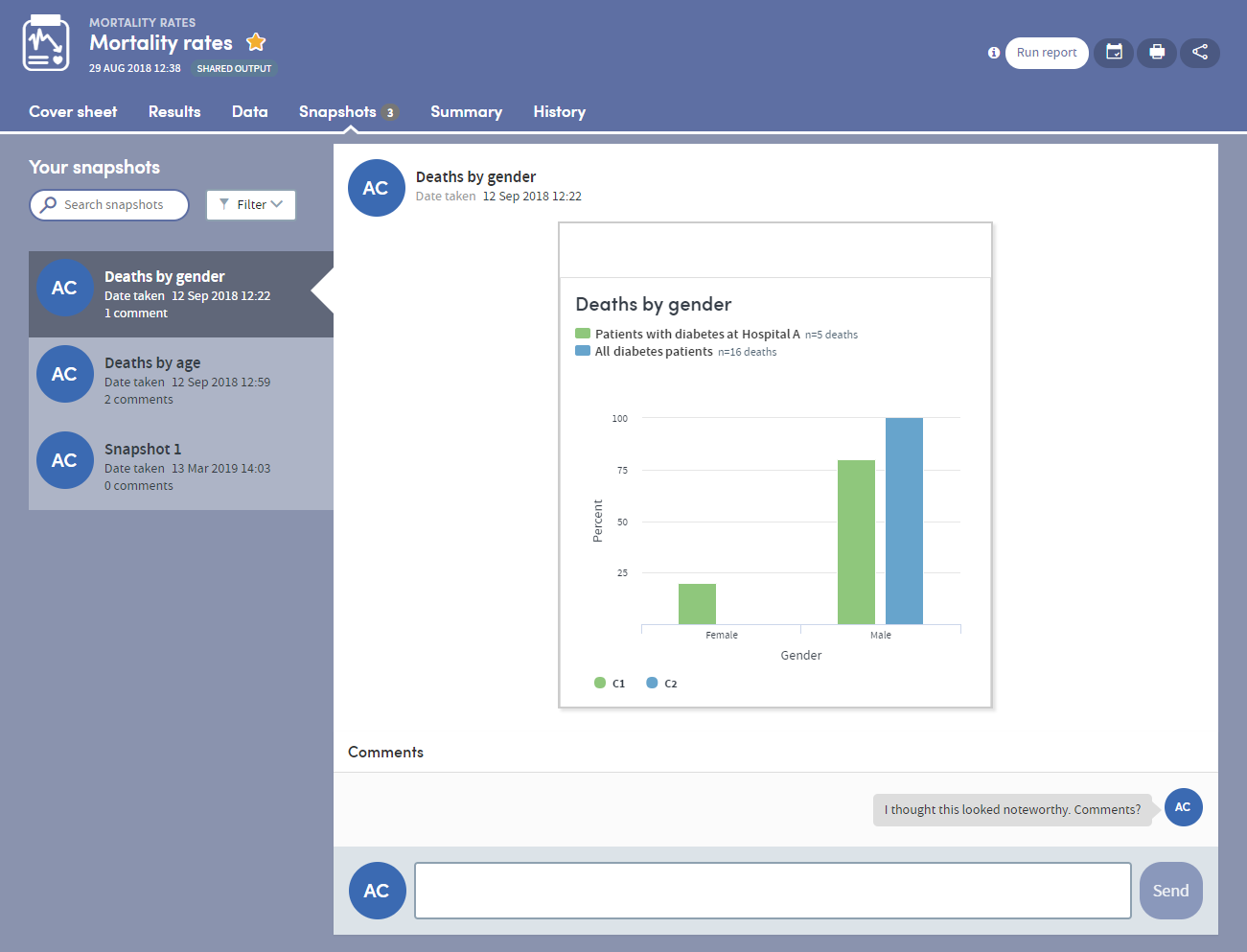
Every user who shares the report output will be sent a notification, letting them know that a new snapshot has been created. Everyone can add comments and discuss the snapshot in real time, enabling easy collaboration with your colleagues:
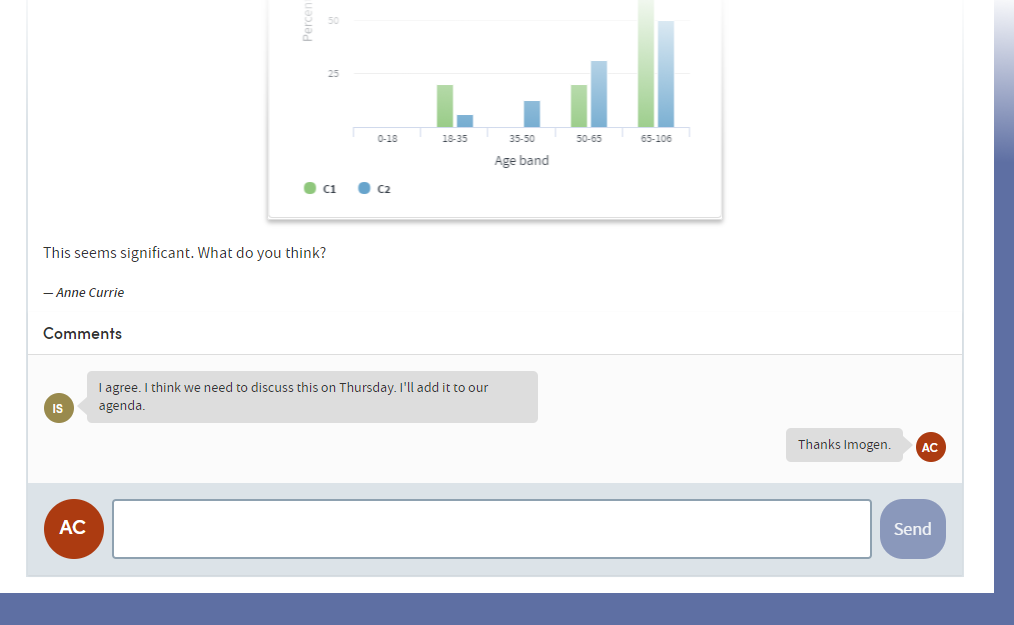
The Summary tab specifies all the options selected by the user who created the report. You can also add annotations to the Summary if you wish:
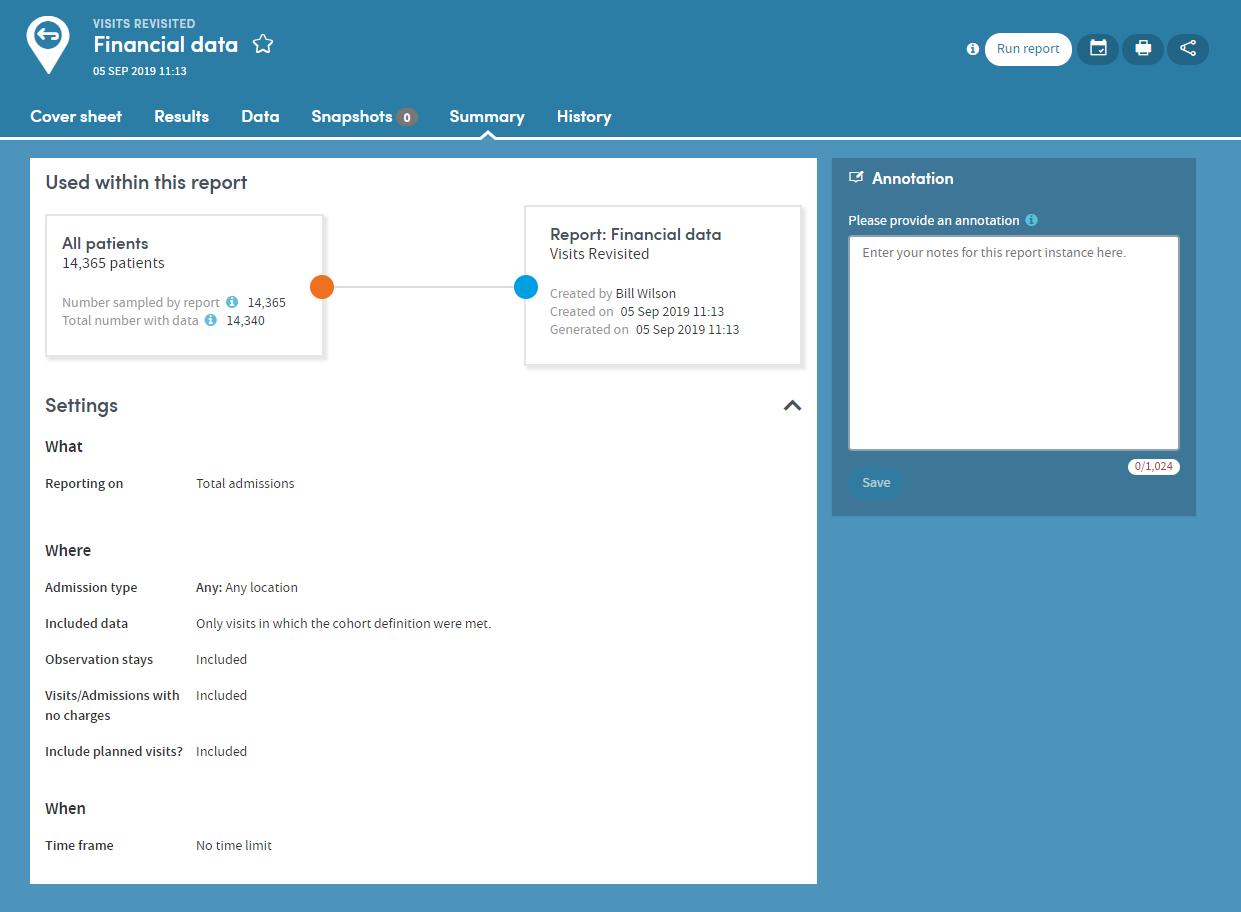
Every time a report is generated, it is saved and can be reviewed at any time. The History tab allows you to select and view any previous version of your report:

Click the View button to see previous versions of the report:

Some of the most frequently used Apps enable subgroups to be created within a report and saved as a new cohort. All the Answers is one of these Apps.
Subgroups are a special type of cohort. They are defined by the identities of the individuals who belong to the cohort rather than by the criteria that select those individuals. Because of this, subgroups are not editable in the way that standard cohort definitions are editable, since all that Atmolytics has available to it are the IDs of the individuals in the subgroup rather than a set of criteria that can easily be applied back with Cohort Discovery.
The Results tab of your report will display the Create subgroup button:

Click the button and choose the individuals you want to include by clicking the check boxes next to the data in the table. As you do so, the Subgroup description field will be populated with the relevant information. You can edit this description if you wish. You also need to complete the Subgroup name field.
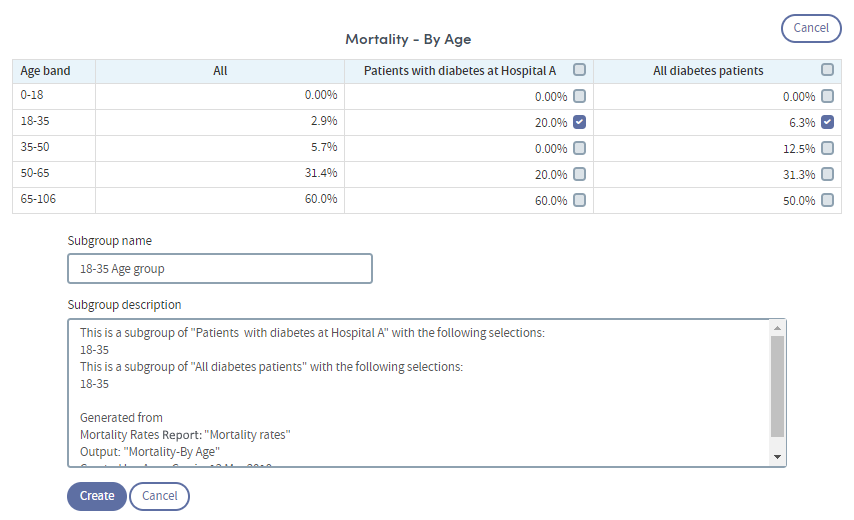
Click Create when you’re ready. The subgroup will be created. You’ll find the new cohort in the My Cohorts area, with a SUBGROUP tag under the cohort name:

Subgroups can be used in reports and (subject to user permissions), shared with other users.